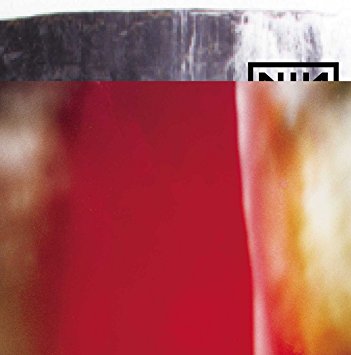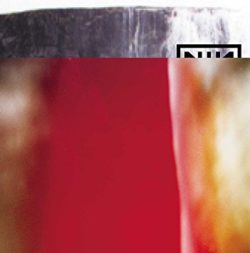NOLA 300 Music
Echoing Your Voice: Trent Reznor’s New Orleans Sojourn Leaves a Mark
Reznor was damaged goods when he moved to New Orleans in 1995
Published: September 3, 2018
Last Updated: March 22, 2023

“The city I thought would be supportive of a band making it out of there was quite the opposite,” he told me in 2009. “I was bitter and jealous and resentful. And I said, ‘You know what? Fuck this place.’ I got in my car and rented an apartment in New Orleans because I liked it.”
Reznor’s move to New Orleans seemed unlikely. The city has rarely been a moderating influence, nor did it support the electronic music that gave his version of arena rock character. The controversial State Palace Theater raves that drew 2,500 people per night in the early 2000s only drew a few hundred when they started in 1995. And because New Orleans’ musical history is built on drums, pianos, and horns, it has been slow to embrace any note that wasn’t brought to life by hand or breath from a musician’s instrument.
Turk Dietrich had felt that cold shoulder. Today, Dietrich is general manager of the Freret Street cocktail bar Cure, but he still has a number of electronic music projects, including Second Woman with Josh Eustis, his friend since high school. In the mid-’90s Dietrich was also part of Chromosome 57, a loose group of young New Orleanians who were certain that they saw the musical future and it was electronic. He was encouraged by Reznor’s move, which “made a future in electronic music seem real and possible,” he says. Also in the group were producer and sound designer Earl Scioneaux III, producer and now filmmaker Nicole Elmer, producer Austin Luminais, producer and now web video creator Grant Horne, Eustis, and Charlie Cooper. Eustis and Cooper would become the best known of the group with a band called Telefon Tel Aviv.
Reznor’s value to Chromosome 57 was ephemeral. Nine Inch Nails was Eustis’ rebel music, a finger in the eye of a city where Jazz Fest mainstays took up all the oxygen. Eustis had planned to move to Athens to attend the University of Georgia, but if Reznor saw something in New Orleans, Eustis thought he should reconsider and choose Loyola instead.
Reznor motivated Scioneaux when the two met in line to see the 1996 movie Independence Day. When Reznor gave him Nothing Studios’ address and told him he could drop off a demo, Scioneaux had a reason to finish the unfinished songs he recorded as The Madd Wikkid. He also worked at Werlein’s Music Store in Metairie, where visits by Reznor were occasions to talk about how to extract uncommon sounds from common instruments. Eustis met Reznor too. He ended his high school prom night by rescuing Reznor from a drunk who’d glommed on to him in a French Quarter bar. They ended up at the Verti Marte, eating po-boys and talking about how contemporary rock sucked and PJ Harvey ruled.
Nine Inch Nails were important to everybody in Chromosome 57, but as a gateway drug. Pretty Hate Machine and The Downward Spiral led them to Aphex Twin and other artists whose influence would show up more obviously in their music. Horne, who deejayed, turned them on to more sophisticated techno, but the group preferred IDM (“intelligent dance music”), an electronic sound typified by acts like Autechre, Squarepusher, Plug, and µ-Ziq that made sonically sculpted sounds aimed more at the head than the body. Together, Chromosome 57 wanted to foster a new kind of scene, despite New Orleans’ overwhelming disinterest in that music.
“‘We were going to be southern IDM,” Nicole Elmer says.
She lived in Metairie with her aunt in a room so stuffed with keyboards, drum machines, and recording equipment that she had to sleep under the mixing console. Everyone else in Chromosome 57 had similar set-ups wedged into bedrooms, and they served as support system, mentoring circle, sounding board, and audience for each other. They threw house parties, brought artists to town, shared discoveries, and got together to listen to music.
Reznor was an inspiration but never part of their circle. Elmer worked as a runner at Nothing Studios, and she put copies of their music in his mailbox there, but those CDs never went anywhere. Reznor didn’t check out the group’s gigs, and if he heard anything they’d done, he didn’t let on. Still, it registered with him that Elmer made music. One day, he offered to let her borrow his Roland TR-808 drum machine.
“I was flattered,” she says. “It was a nice gesture, but I remember thinking, ‘This guy has no idea that my whole bedroom is converted into a music studio.’ And I didn’t have the heart to tell him no thank you.”
The 808 sound had not yet transitioned from dated to classic, so Elmer found its tacky brilliance perfect for Squab Teen, a project she started with Austin Luminais. They described it as “electro-barf,” and scoured Toys “R” Us for the cheap, improbable sounds that they harnessed for the 2000 release from Chromosome 57 and local indie label Turducken Recordings titled Dance America. They designed Squab Teen to puncture the pretensions of techno pioneers like Carl Cox, Juan Atkins, and their fans, but it sounds like the flip side of Nine Inch Nails as well. “My Sweatshirt” meets Reznor’s death-of-self drama with a blasé vocal, as Elmer asks if anyone has found her lost sweatshirt.
In 2000, Eustis got the call that they’d all privately hoped for: “When are you going to come in and do some remixes?” Reznor heard 1999 Telefon Tel Aviv tracks from Nine Inch Nails producer Alan Moulder, and he invited Eustis, Cooper, and Dietrich to contribute to Things Falling Apart, the remix companion album to NIN’s The Fragile.
That didn’t make them best buds with Reznor, though. Their point of contact was Moulder, who’d stop in to listen when he heard something he liked, or let Eustis look over his shoulder to see how he did something in the A studio.
“I picked up a lot from him,” says Eustis, who contributed to Reznor and Moulder’s “The Great Collapse,” and who, with Cooper, remixed “Where is Everybody” and “Even Closer.” Eustis and Dietrich remixed “The Frail” under the name Benelli, but they ran out of studio time and had to finish it in their home studios. Together, they gave the slight instrumental more definition with a tangible atmosphere and the drama that came with Eustis’ string arrangement.
“Where is Everybody?” presents Reznor and Telefon Tel Aviv on equal, uneasy footing as it preserves much of the original track’s aggressive energy next to glitchy clicks and pops that emphasize Reznor’s solitude. “Even Deeper” only appears on Telefon Tel Aviv’s Remixes Compiled, and it is more compelling because Eustis and Cooper took Reznor’s track entirely into their sonic space. The spare, crawling-through-a-drainpipe groove of Nine Inch Nails’ original track disappears, along with Reznor’s voice, to reveal the cinematic, hyper-pixelated soundscape the song implied.
Reznor closed Nothing Studios and left New Orleans in 2004. “The reason I left, really, is that I know in my own psychology, one of the reasons I liked it there was I could isolate,” he said in 2009. “I could hide from the world. I wasn’t in L.A. I was far enough away that I wasn’t going to get sucked into meetings or people who intimidated me. I wanted to hide out pretty much, and it dawned on me a few years ago that at this point in my life, I need to be around my peers. And, pretty much all the people that do what I do live in L.A., so I thought, ‘Let me try it for a while.’”
By 2004, Chromosome 57’s members were scattered around the country. Nicole Elmer moved to Austin when Nothing closed. Scioneaux was already in New York City, and Horne was working for a TV station in Philadelphia. Telefon Tel Aviv had two albums out on Chicago’s Hefty label, and Dietrich had a new project, Belong. They grew up in those years, and so did Reznor.
Alex Rawls writes about music and culture in New Orleans at MySpiltMilk.com, and in the last twenty years he has written on a full-time or freelance basis for most of the major publications in the city. Earlier this year, he contributed a chapter on Jazz Fest to the Louisiana Endowment for the Humanities’ tricentennial anthology, New Orleans & The World: 1718–2018. In 2012, he guest-edited The Oxford American’s Louisiana Music issue, and he has contributed essays to the catalogues for the art shows The Eighth Day: The Transgenic Art of Eduardo Kac in Tempe, Arizona and Dario Robleto: The Prelives of the Blues at New Orleans Museum of Art.
